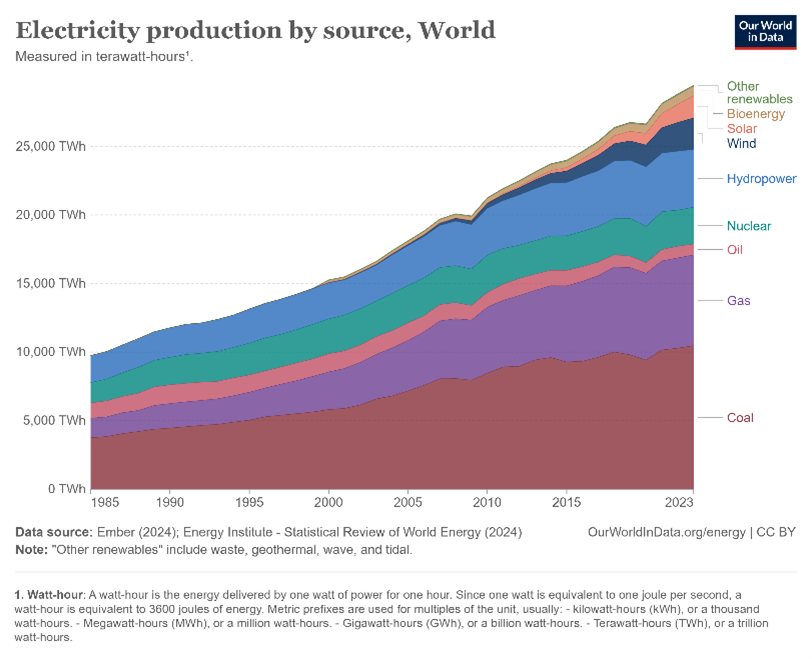A recent article at Rigzone, “Rystad: Oil, Gas Will Remain Central to Energy Mix for Foreseeable Future,” reports on comments made by Rystad Energy, a Norwegian energy research company, in a report it published claiming that despite the push for renewables, oil and gas will stay dominant as an energy source in the coming years. This is true, although Rystad goes on to lament the resulting emissions and tries to push further decarbonization. It is true that there has been little actual transition, despite what renewables hawks say.
Rigzone writes that “despite the accelerating energy transition, oil and gas will remain central to the global energy mix for the foreseeable future as the key hydrocarbon sources continue to satisfy global primary energy demand, Rystad Energy stated in a release . . ..”
Rystad predicts that more than 75 percent of total energy demand will be met by fossil fuels by 2030.
Rystad’s report says that as upstream energy companies “work to transform into integrated energy players and decarbonize their operations, it is crucial not only to achieve transition goals but also to minimize the carbon footprint of upstream activities, with extraction of these resources accounting for more than 800 million tonnes of CO2e every year.”
Going further, Rystad recommends recommend energy companies focus more intensely on “premium energy basins” to try to “decarbonize” operations.
It seems strange that Rystad would say it’s crucial to “achieve transition goals” – meaning the so-called energy transition away from the use of fossil fuels, which would not only “minimize” the carbon footprint of upstream operations, but aims to eliminate them altogether. They advocate in wishy-washy corporate terms for the annihilation of the industry that Rigzone purportedly represents.
In terms of energy supply, Rystad’s report predicts that even as wind and solar produce a larger percentage of energy by 2050, overall the global energy supply will drop rather than continue to rise. This forecast should alarm anyone concerned about continued economic growth, which tracks energy use. It is especially troubling when one considers the political push to electrify everything, from electric vehicles, to appliances, in addition to the projected demand for power from utilities to satisfy the growing demand electricity to power data centers and AI facilities. (See figure below)

Real-world electricity production data described by Our World in Data, provides little evidence of a transition from fossil fuels to renewables. Rather wind, biofuels, and solar are being added to the overall mix, with traditional sources of energy still growing, although at a slower rate than in past decades. Consumption of all energy sources has increased or remained constant since the 1980s. (See figure below)

Coal, despite being villainized in the West lately, may well also continue to see increasing demand in international markets. In 2022, a new record for coal consumption was hit, and it made up 37 percent of the world’s energy use in 2023. In 2022 India revised their energy use targets and increased their coal production and use. As discussed in a Climate Realism post, “Green Media Misrepresents World’s Energy Reality,” India, on its own, is set to consume more energy than all the countries that make up the European Union by 2030, and coal will be large part of that mix. Likewise China continues to buy up and use coal, and they also have been steadily increasing demand for oil.
Renewables would need to make an unbelievable, and likely technologically and materially impossible, jump in the coming years to catch up and displace fossil fuels like oil, gas, and coal.
As Climate Realism has pointed out many times; here, here, and here, for example, forcing an energy transition will lead to misery and reduced or halted standards of living for people around the world.
It is not clear what Rigzone and Rystad mean by an “accelerating” energy transition, based on the facts above. If anything, it seems like the growth of coal and oil and gas are at worst keeping pace with gains made by renewables like wind and solar. Rigzone and Rystad are both correct, though, that for the foreseeable future oil and gas will continue to make up the vast majority of global energy production.

















